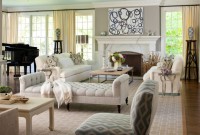Where does all the important work in the kitchen happen?
The Bench top of course. Choosing a hardwearing and attractive surface material is imperative.
Natural Stone – cut from Raw Quarry Block into slabs usually 20–30mm thickness for bench tops. Marble and granite are the more popular choices.
MARBLE – once, only select people allowed themselves the luxury of marble bench tops in the home. Marble is more preferred surface for bathrooms than kitchen, being more porous than granite. A bathroom bench-top fit for royalty, with classic beauty and texture, is both suitable and affordable for both domestic and commercial use.
GRANITE – provides a great colour and grain variation. Elegant, durable and less subject to stains and scratches than other natural stone. Aesthetically appealing. Manufactured to suit anyone’s requirements. Interiors gain stature and granite provides an extremely hardwearing and low maintenance surface.
Engineered Stone – contains unsaturated polyester resins which require curing under stringent and exacting conditions normally at very high, constant temperature. Their performance is totally reliant on the quality of raw material and quality assurance during the whole manufacturing process.
RECONSTITUTED STONE – made up of quartz, granite granules, marble dust or glass chips, mixed with a resin or polyester base. Exceptional results in strength, hardness, durability and stain resistant with a high resistance to cracks and chips. With colour consistency and the greater degrees of conformity in terms of appearance. The range available to us has increased tenfold, Essa Stone, Caesarstone, Quarella Quartz, Stone Italiana, Corian, Terrazzo and Marblo just to name a few.
If correctly chosen, both natural and engineered stone provide for very practical bench tops. So how do you make the correct choice that will suit your lifestyle? Prioritise the characteristics most important to you from the list below.
COLOUR SELECTION
Colour generally rates as the top characteristic for consumers, as it needs to suit, match and complement the décor it will be placed into. Always view samples from a supplier, as they typify the colour extremes that can occur from time to time as both natural and engineered stone may vary from piece to piece.
TEXTURE
Texture creates the depth and style a consumer is looking for. Repeat the same process as used for colour selection. Certain characteristics will be determined by the stones texture i.e. crystal size, pitting, veins, inclusions and internal fracture lines. Be sure to ask to see the extremities that are likely to occur in the product. Occasionally fillers are used to fill small inclusions or pit marks; this is not a guarantee remedy for life but may serve the purpose.
DURABILITY
Durability is often not considered first, though it should be. Always consider the environment the chosen product will be exposed to. Granites are considered more durable than marble or engineered stone in general circumstances.
STAIN RESISTANCE
Staining is either acceptable or unacceptable by the consumer. Staining can occur either from sulphides within the stone that are activated from external sources or from external applications penetrating the stone.
CLEANING, CARE AND MAINTENANCE
This is also very important as consumers need to honestly judge their lifestyle and living habits and determine the amount of cleaning, care and maintenance that will fit and be managed by their lifestyle.
SEALING OF STONE
Sealing should only take place on stone that is porous.
TIP – purchase a piece the size of a breadboard, to trial at home for a week or two prior to ordering.
Leanne J Zielke
Colour Design Consultant
Accent on Colour / Andersons Curtains
0413 009 380 / 41515757




